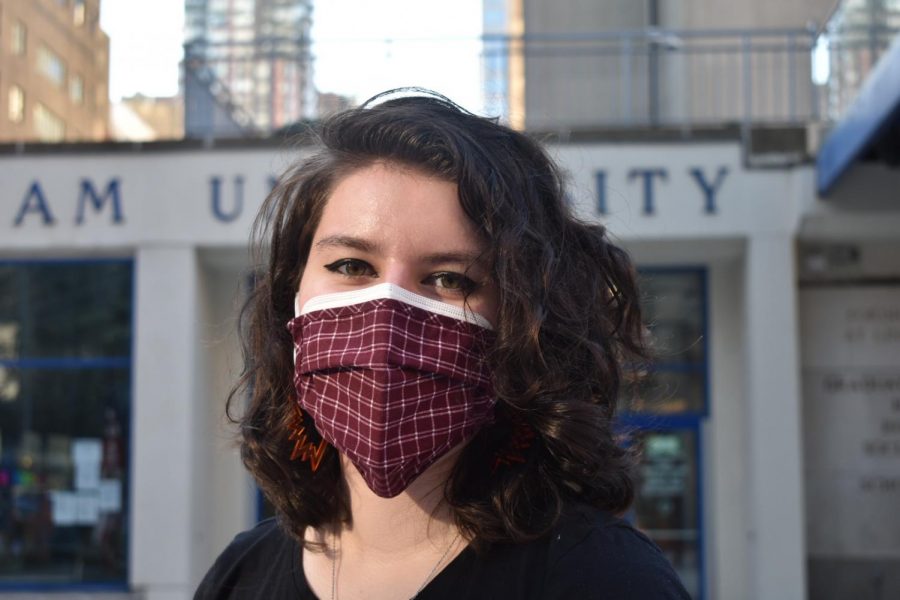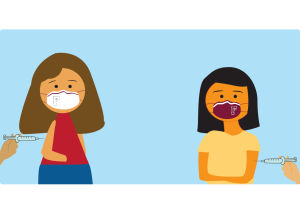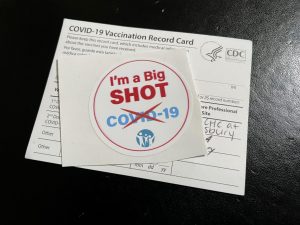Double Up? The Science Behind Double Masking
While one mask may be sufficient, an additional mask better prevents viral transmission
Wearing an additional face covering reduces the chances of inhaling or exhaling coronavirus-laden particles, and contrary to belief, doesn’t hinder one’s breathing. The CDC recommends wearing a surgical mask under a cloth covering to reduce risk of exposure.
March 18, 2021
Mask-wearing has come to define the COVID-19 era. While we’re all encouraged to cover our mouths (and noses) as a means to protect ourselves, some health experts now suggest that one is not enough. Dr. Anthony Fauci, director of the National Institute of Allergy and Infectious Diseases and chief medical advisor for the Biden administration, told Americans, “it just makes common sense” to wear an additional covering as a means of further protection.
Scientists agree that having more layers of fabric between a person’s face and the air they are breathing will ensure better protection, though this alone does not fully protect against COVID-19 transmission. Other factors, like the quality of the covering itself and if it’s properly fitted, also play an important role.
The Centers for Disease Control and Prevention (CDC) ran a study on the efficacy of different forms of masks and found that wearing a medical covering — the common blue-colored masks often worn in surgical settings — in addition to a cloth mask offered the best protection against inhaling coronavirus particles. Masks that snugly fit around one’s face and offer additional protection, such as tucked-in sides and knotted earloops, also performed well.
“I don’t think it would make much difference breathing compared to one mask.” Emily Yih, FCLC ’22
The CDC urges mask-wearing in any public setting, with multiple layers of tightly woven cloth fabrics performing better than single layers of lower thread count fabrics. Fabrics made of tightly woven materials like nylon and cotton offer the best protection, while silk ranks highly in terms of comfort and breathability. Wool and loosely woven fabrics should be avoided as they still allow coronavirus particles to pass through. Ultimately, any cloth that fully covers the face and nose will work as long as the fabric’s threading is tight enough and there are no external vents that allow unfiltered air to get through.
Students at Fordham are required to wear a face covering on campus and are highly encouraged to do so off-campus as well. While it’s completely up to one’s discretion whether to double mask, some students have taken on the practice as an extra precaution.
Emily Yih, Fordham College at Lincoln Center (FCLC) ’22, feels safer double masking because it protects her and others around her. She plans on wearing two face coverings when with her recreational dancing troupe, saying, “I don’t think it would make much difference breathing compared to one mask.”
While everyone else she dances with wears a mask, Yih sees few others wearing a second covering. Yih continues to double mask since she feels it helps “people around me to feel safe as well.”
Some students have reservations about double masking during physical activity. Bryan Hutcheson, FCLC ’22, said he almost never sees double masking while at dance class at Alvin Ailey.
“I saw it initially in the year, but almost nobody does it anymore,” Hutcheson said.
Hutcheson himself only wears one face covering at practice, and he feels that additional masks would make breathing harder. “Jumping around while wearing multiple masks just doesn’t sound comfortable,” he said.
If one’s mask is of superior quality, double masking may not be necessary, but it does provide more protection without any drawbacks. Contrary to popular belief, wearing more than one mask does not restrict oxygen intake, regardless of the physical activity performed.
A second mask improves the odds of filtering out coronavirus particles without any risks or drawbacks. But to fully protect oneself from infection requires more than just what’s worn around the face. It’s important to practice social distancing when in public, as well as regularly washing your hands.

















